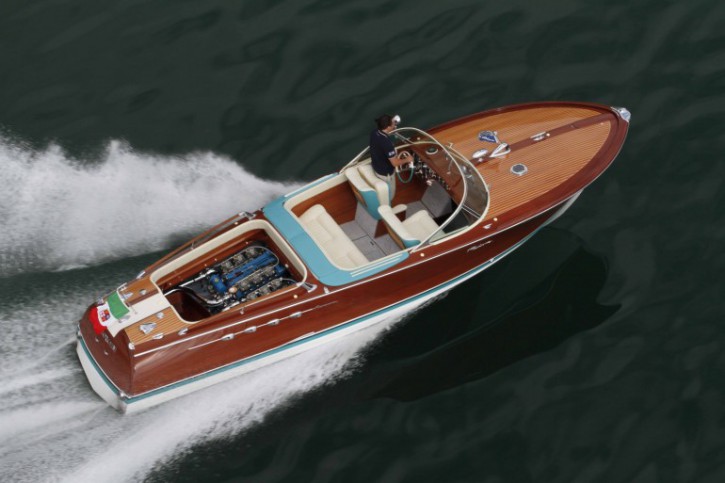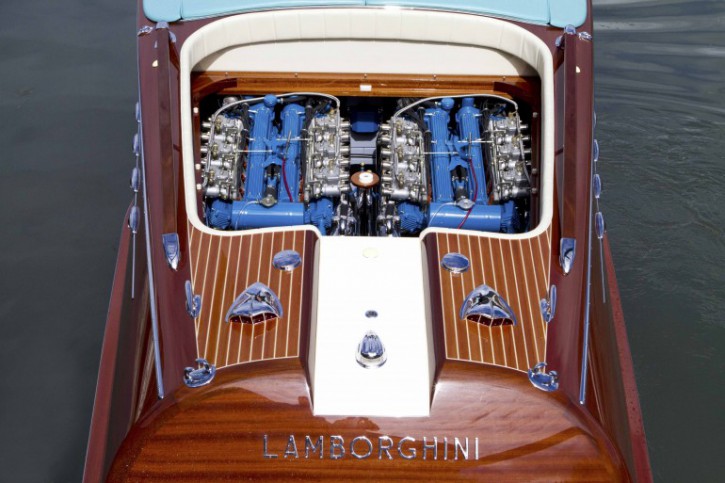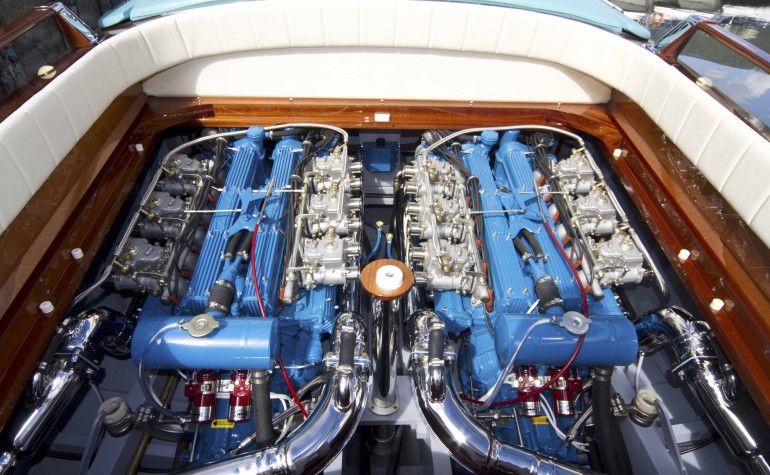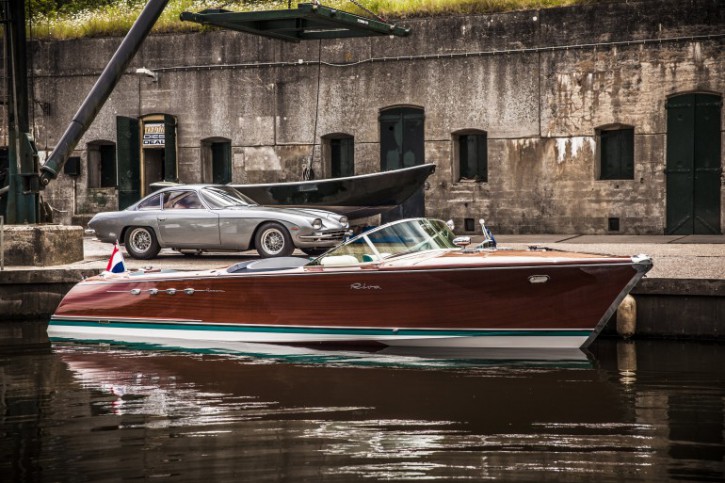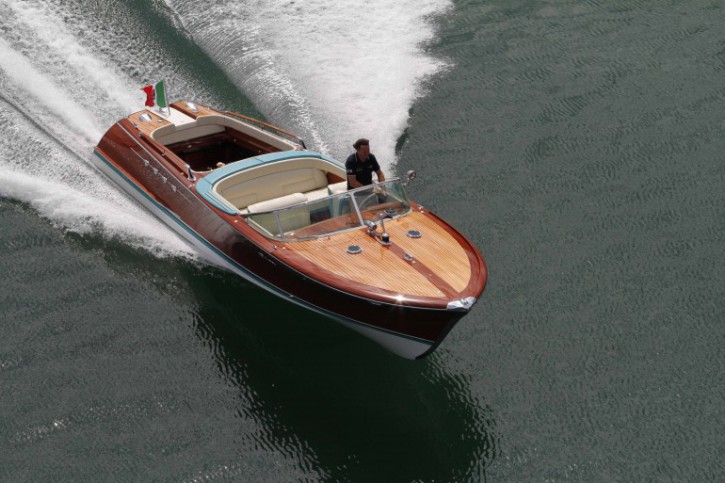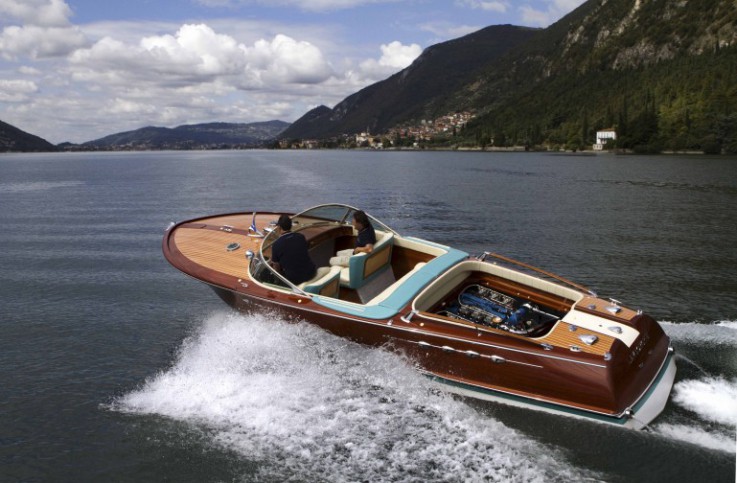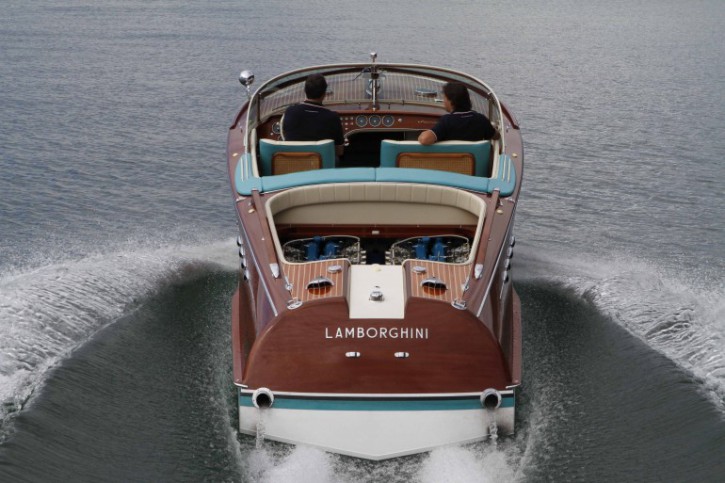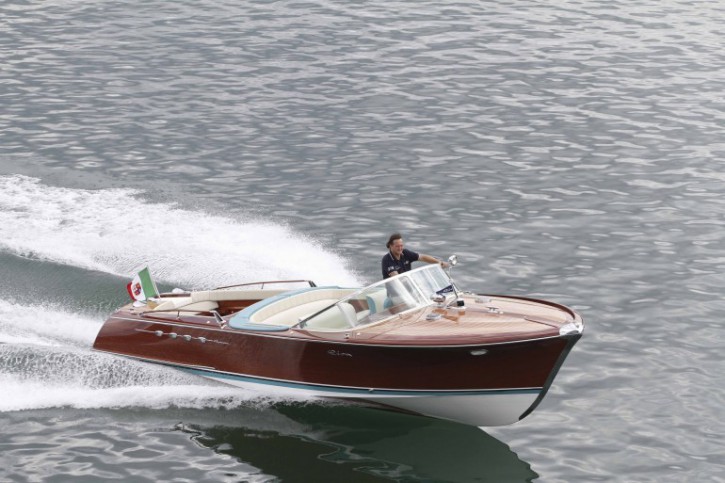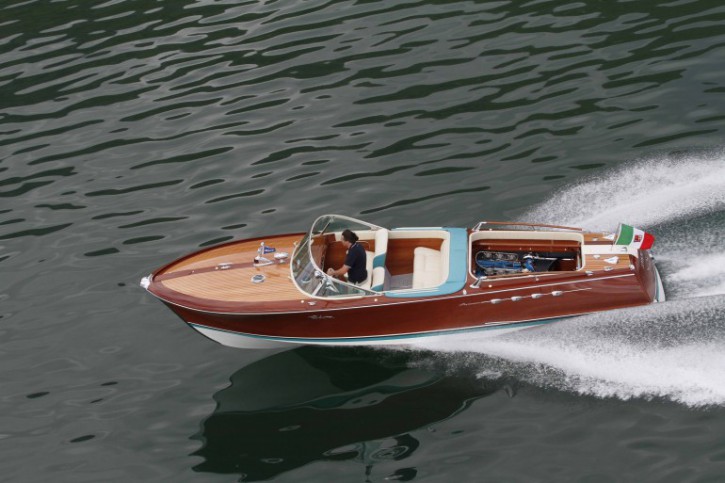Neglected after it’s owner’s death in 1993, this gorgeous boat sat untouched for many years, until it was found by a dutch collector and was sent to Riva World in Uithoorn in the Netherlands, to make her shine again. After a three year restoration project, Ferrucio Lamborghini’s Riva Aquarama speedboat looks good as new. The Riva Aquarama has two of Lamborghini’s 350 bhp 4.0L V12 engines that came from a Lamborghini 350 GT. The original engines were no longer available to use, so 2 engines were found in the US that could be converted to the same configuration as the originals. One of the original engines sits in the Lamborghini Museum in Italy. It was used as a reference for the various original parts that had to be copied to marinize the new engines. On the inside, white and turquoise leather covers all the seats. The woodwork was in dire need of attention and after repair, and sanding, 25 coatings were applied to seal it all up. The chrome work, already laid on thick, was polished up to a bright shine. All of the original switches and buttons wee disassembled and restored as well. The Lamborghini powered Riva Aquarama topped out at 55mph, while in comparison, stock Riva Aquarama’s fitted with V8 Engines could only muster 46mph.
The original production for this boat ranged from 1962 to 1996, and the Riva Aquarama was the top of the line for Italy’s Riva boat works. Hull No. 278 was built in 1968 under a commission by Ferruccio Lamborghini, the founder of the Italian sports car company that bears his name. It took three months to build and Lamborghini didn’t just sit back and wait for his boat to show up. Dissatisfied with the standard V8 engine, he took a pair of 350 bhp 4.0 V12 Lamborghini engines from the Lamborghini 350 GT and adapted them. This made it not only the fastest Aquarama ever built, but an Aquarama with the heart of a Lamborghini.
After the restoration was complete, the Lamborghini powered Riva Aquarama was taken to Italy and put through its paces under the eye of its creator, Carlo Riva on Lago d’Iseo, where it was built.


